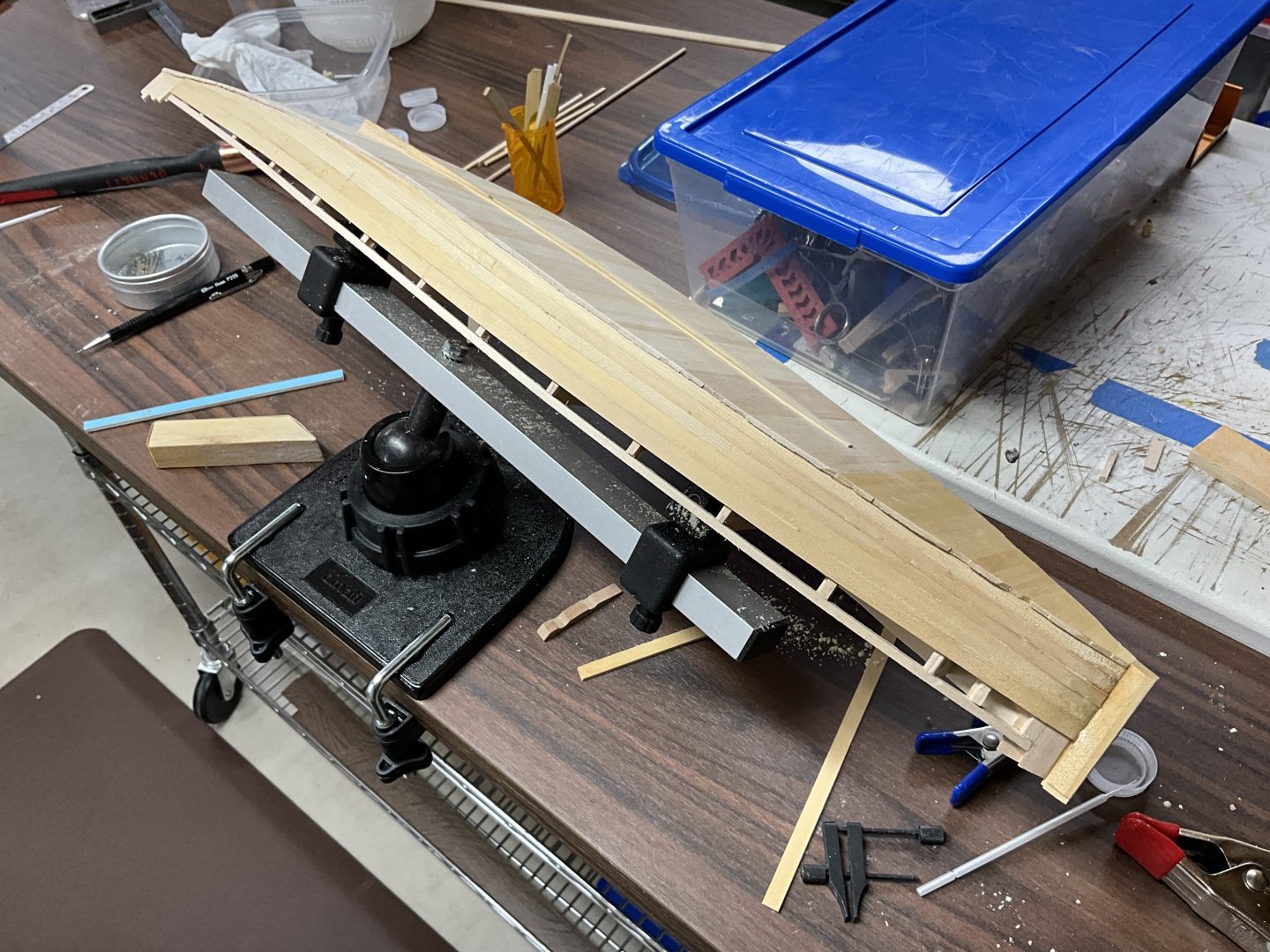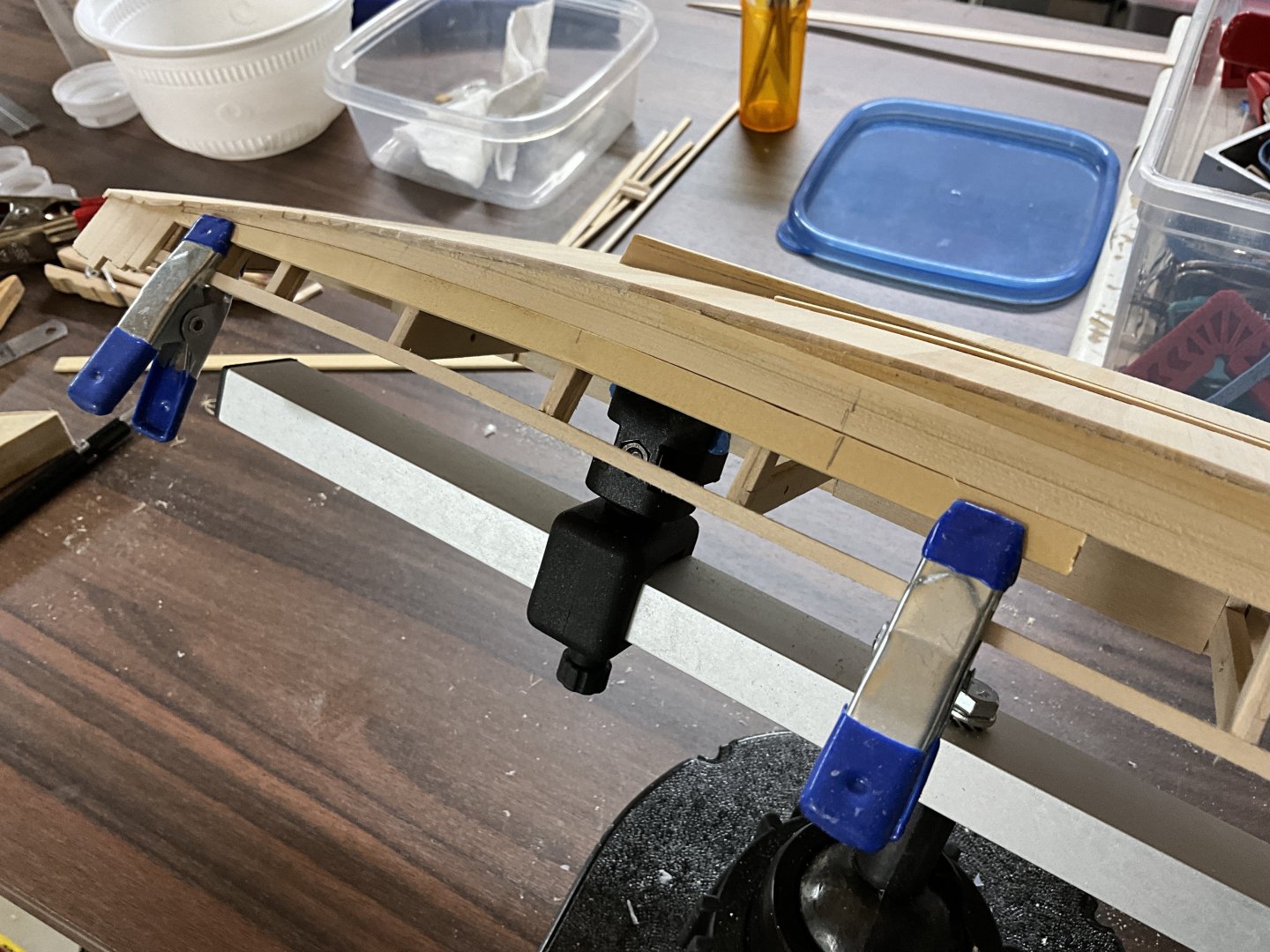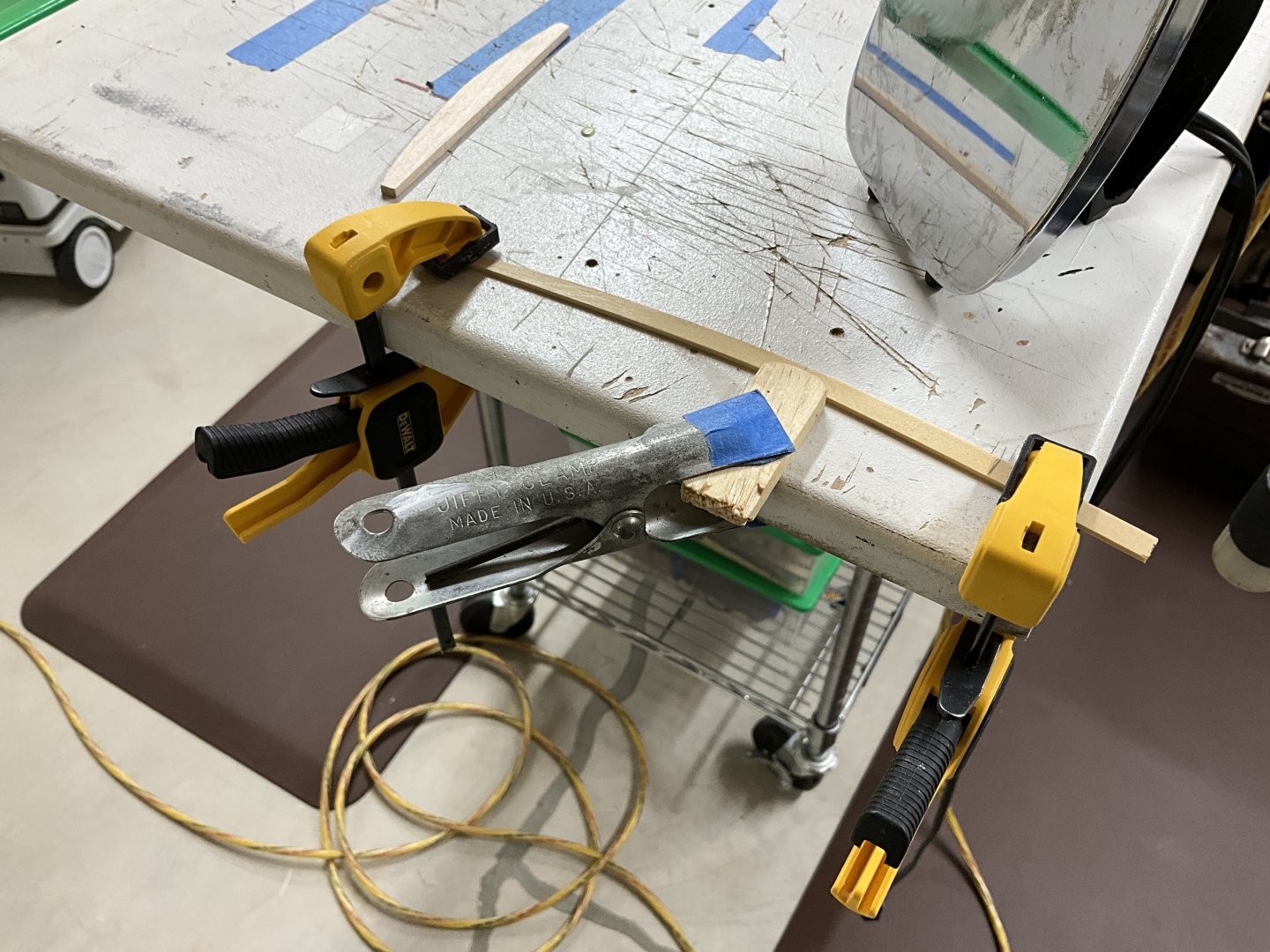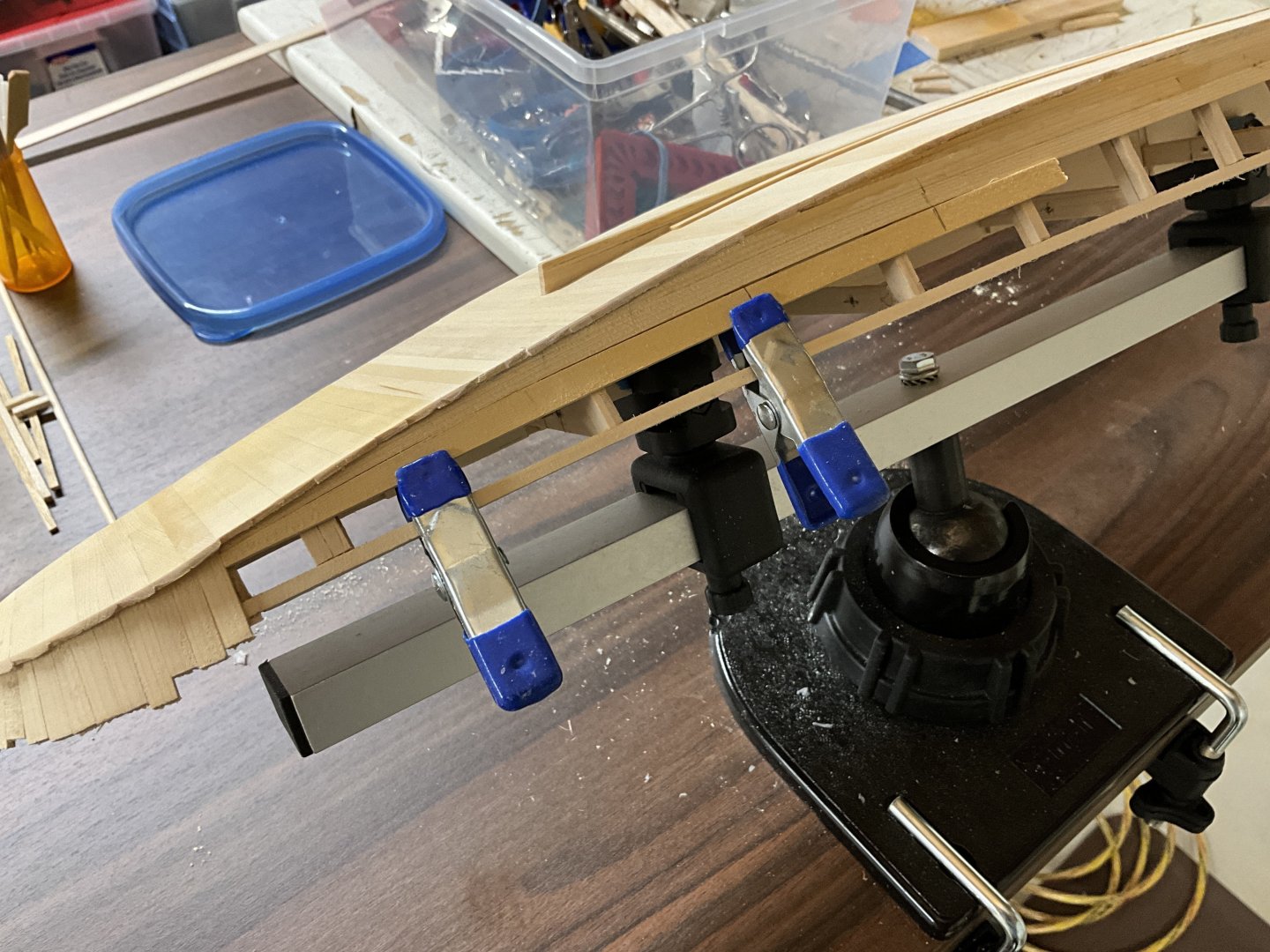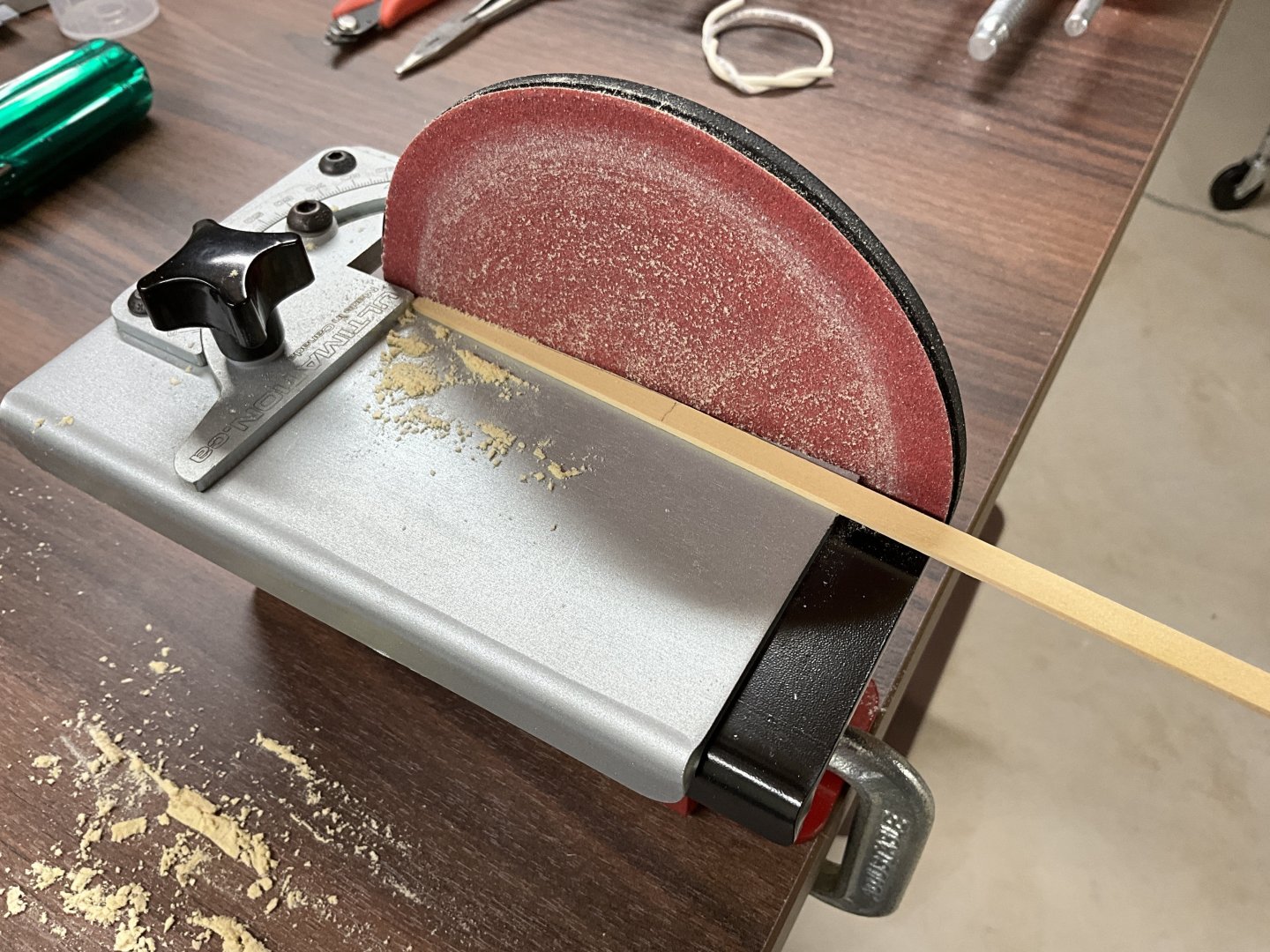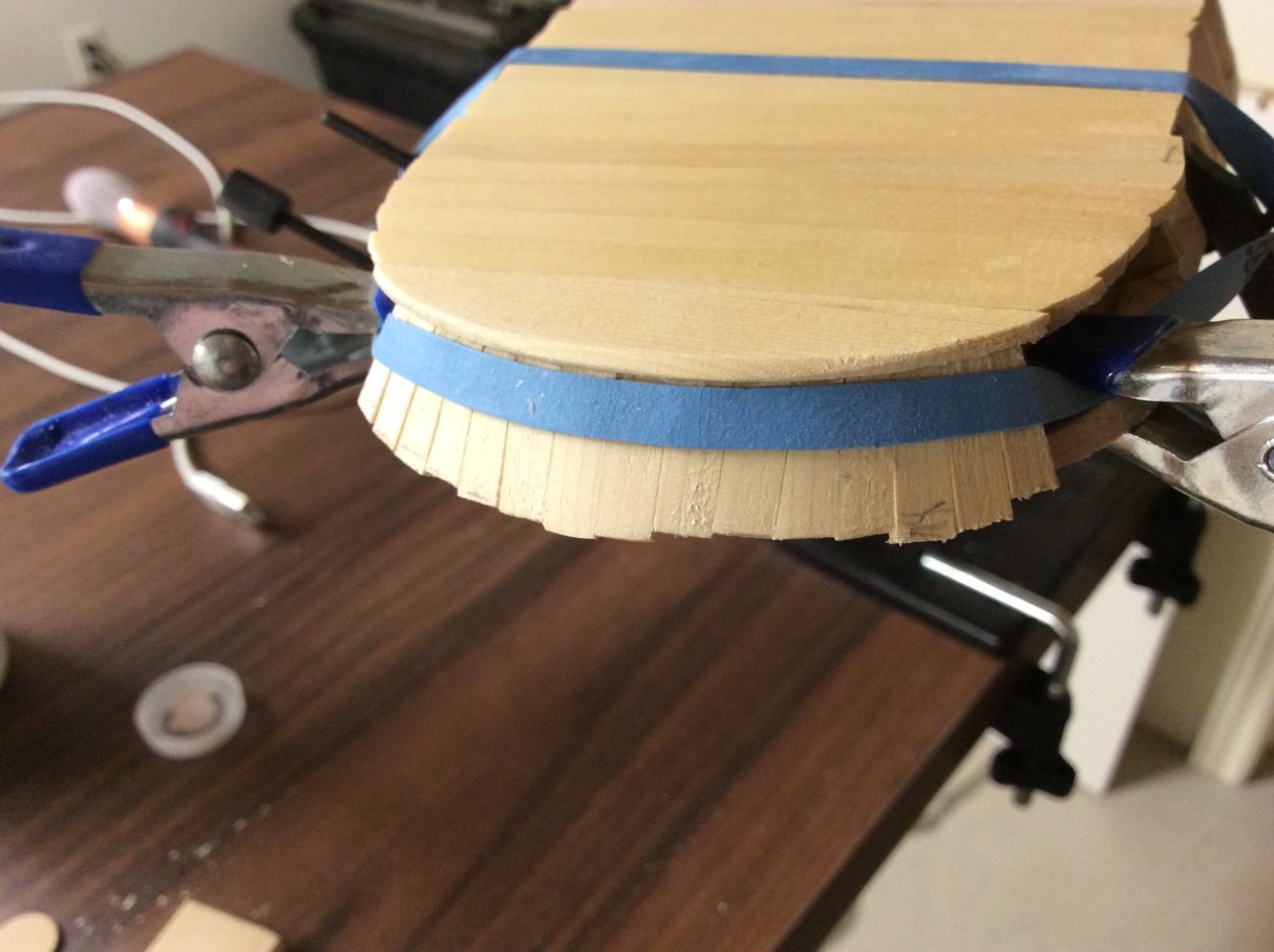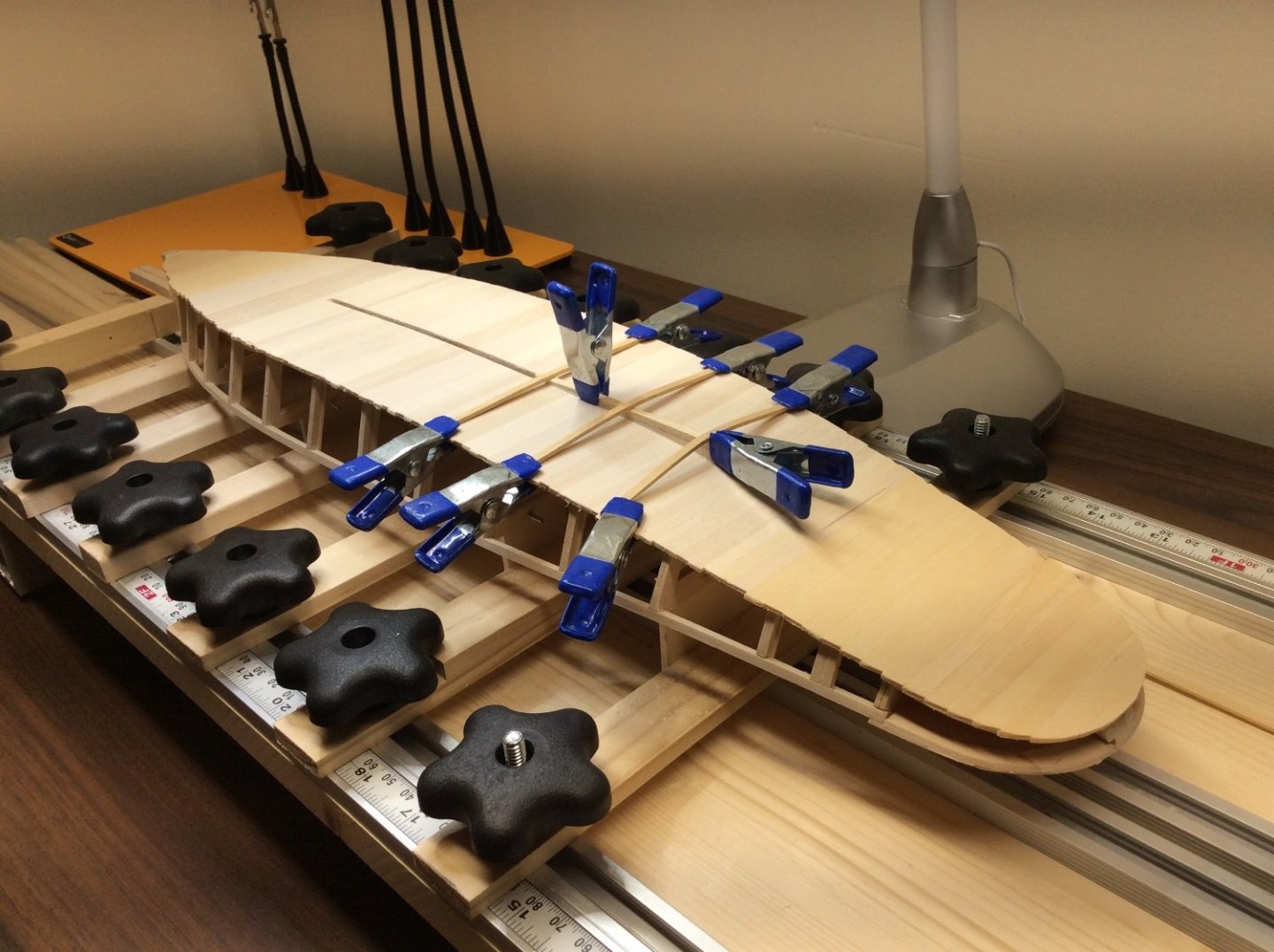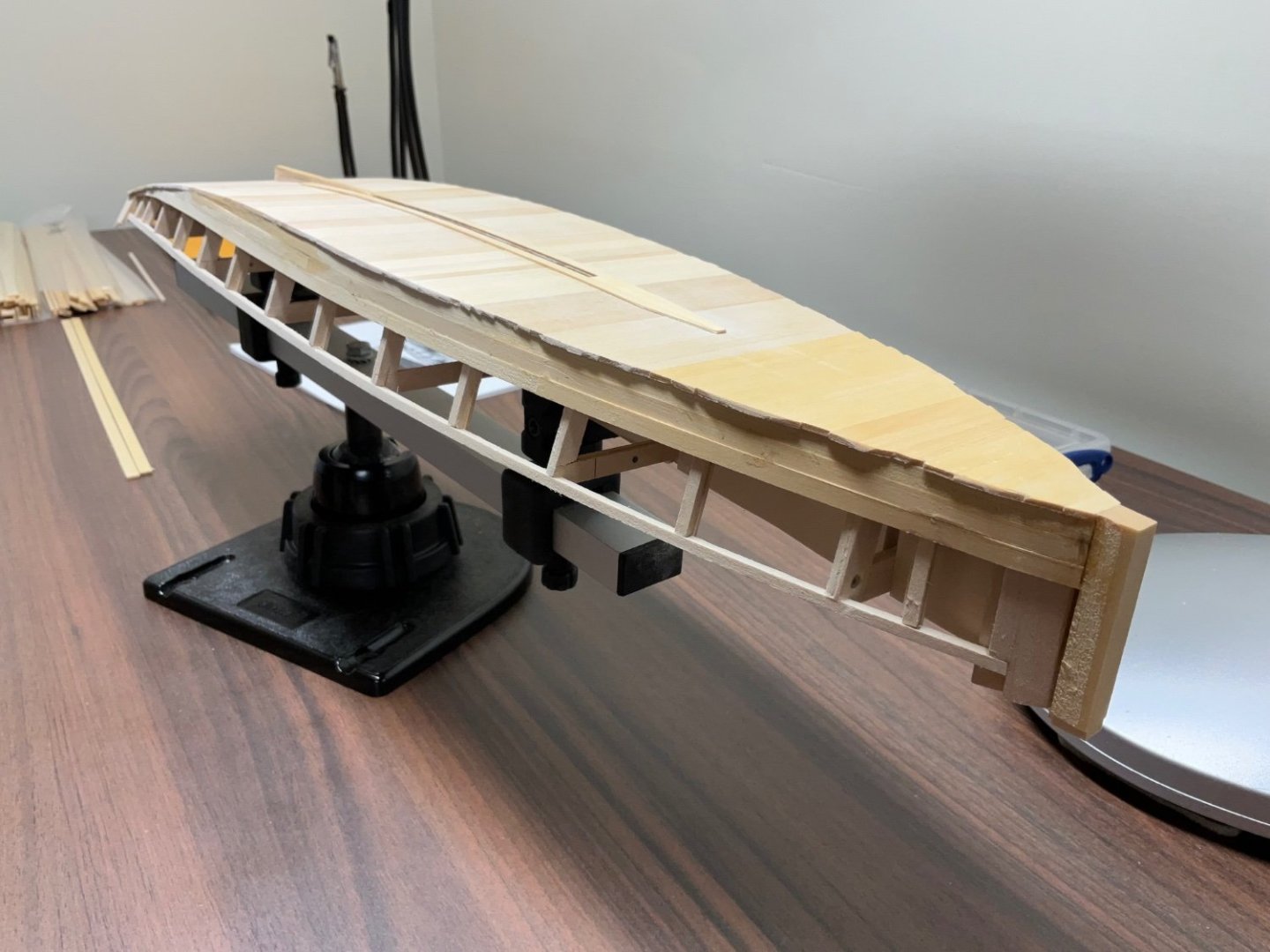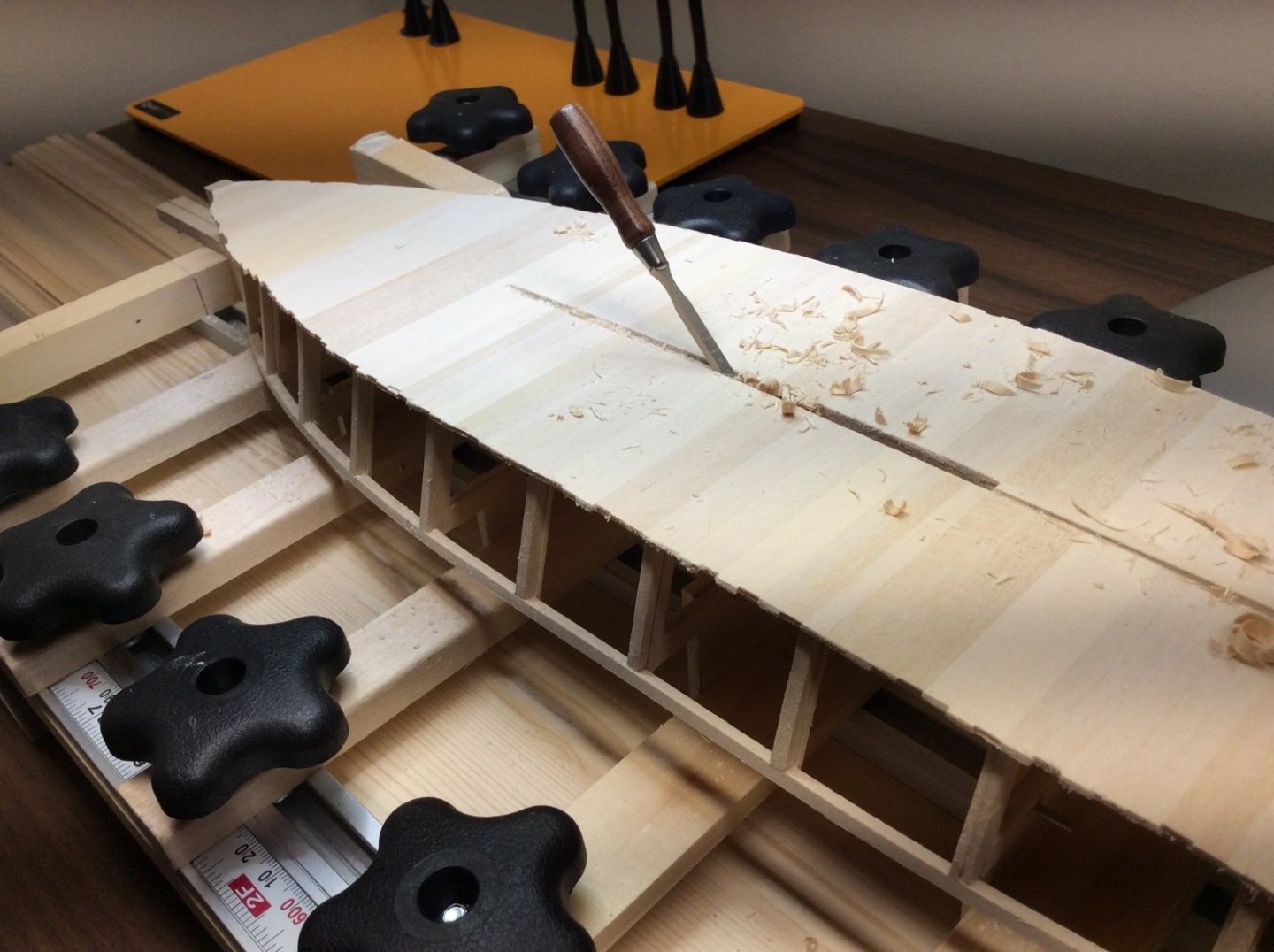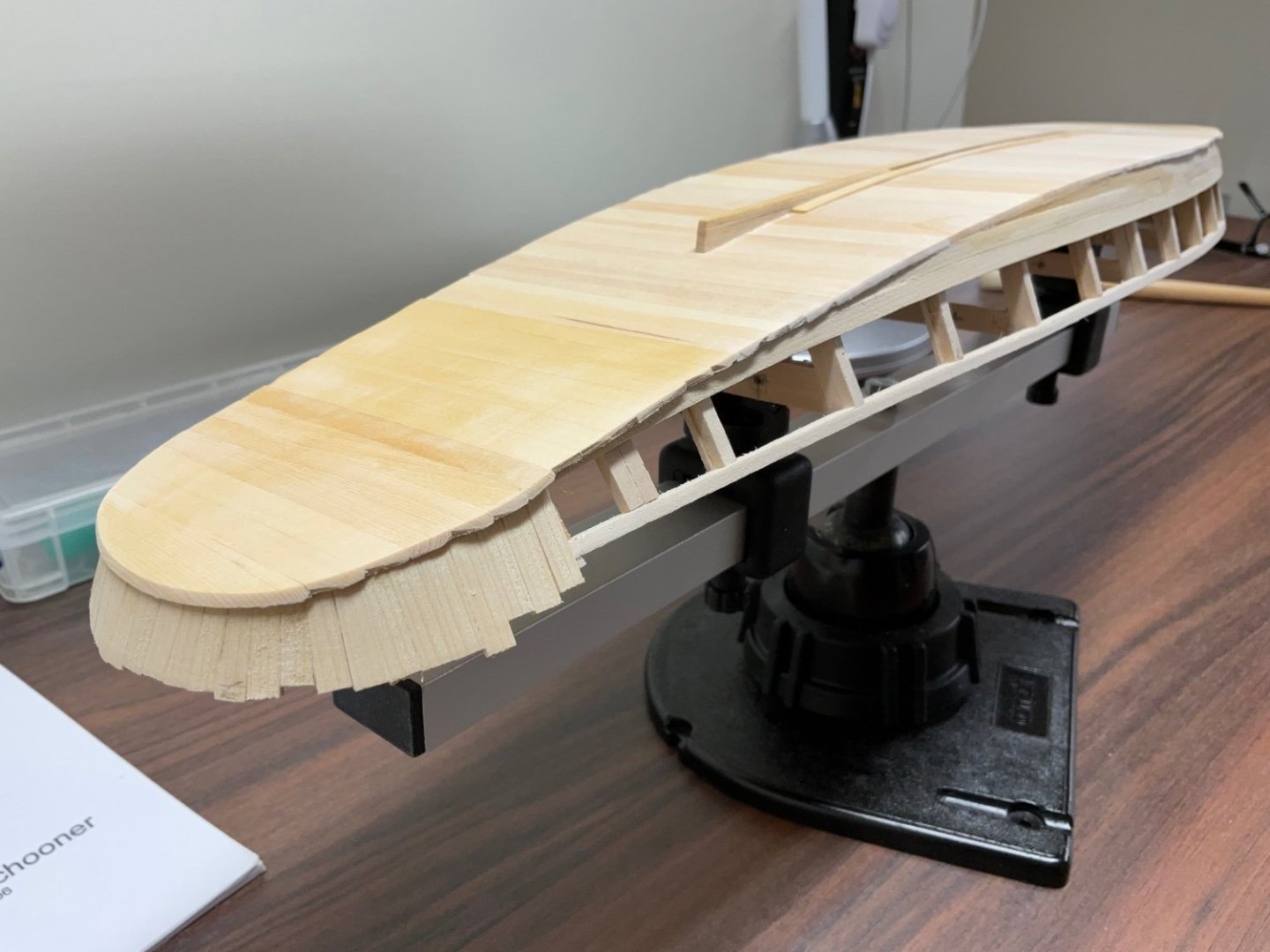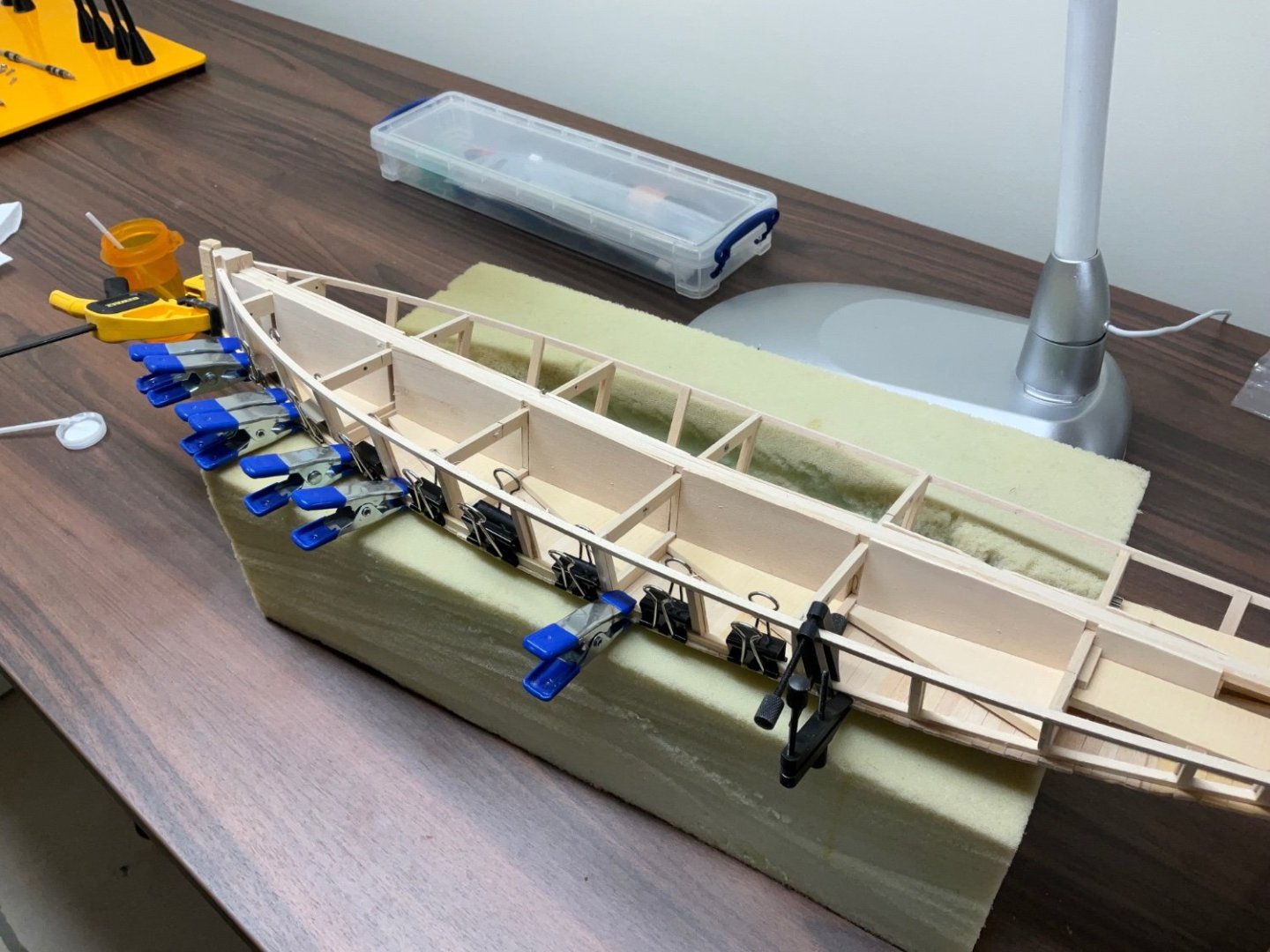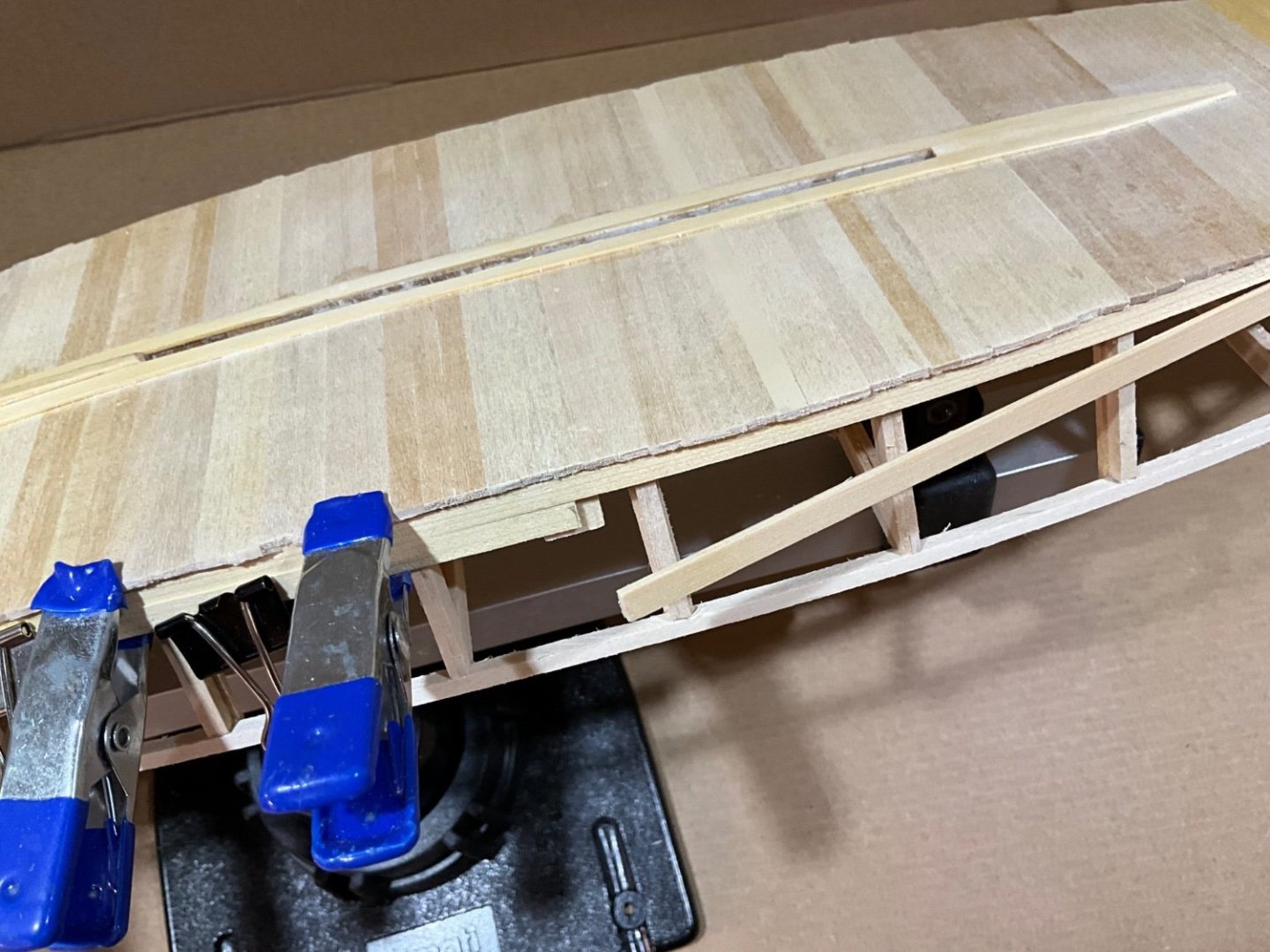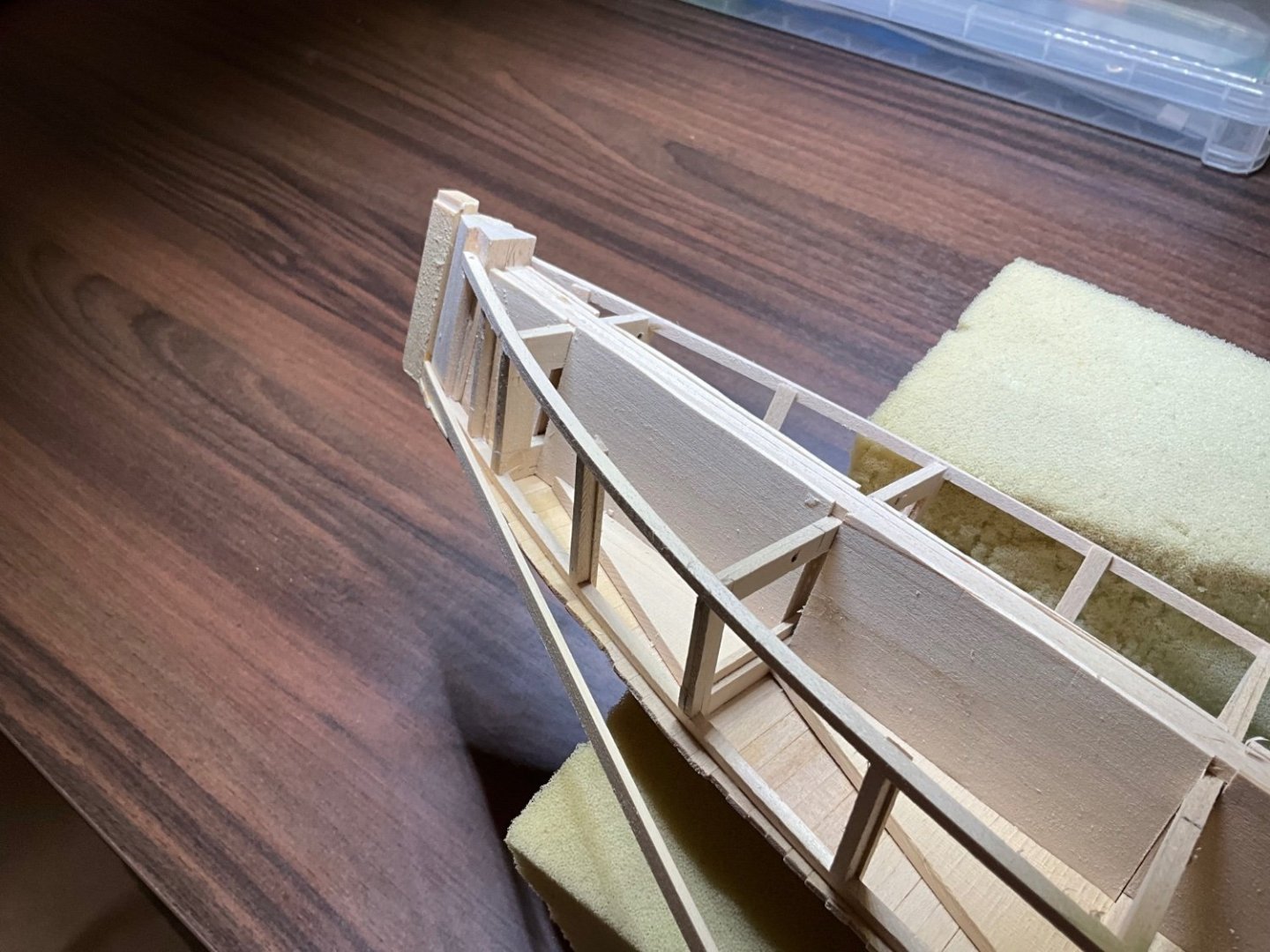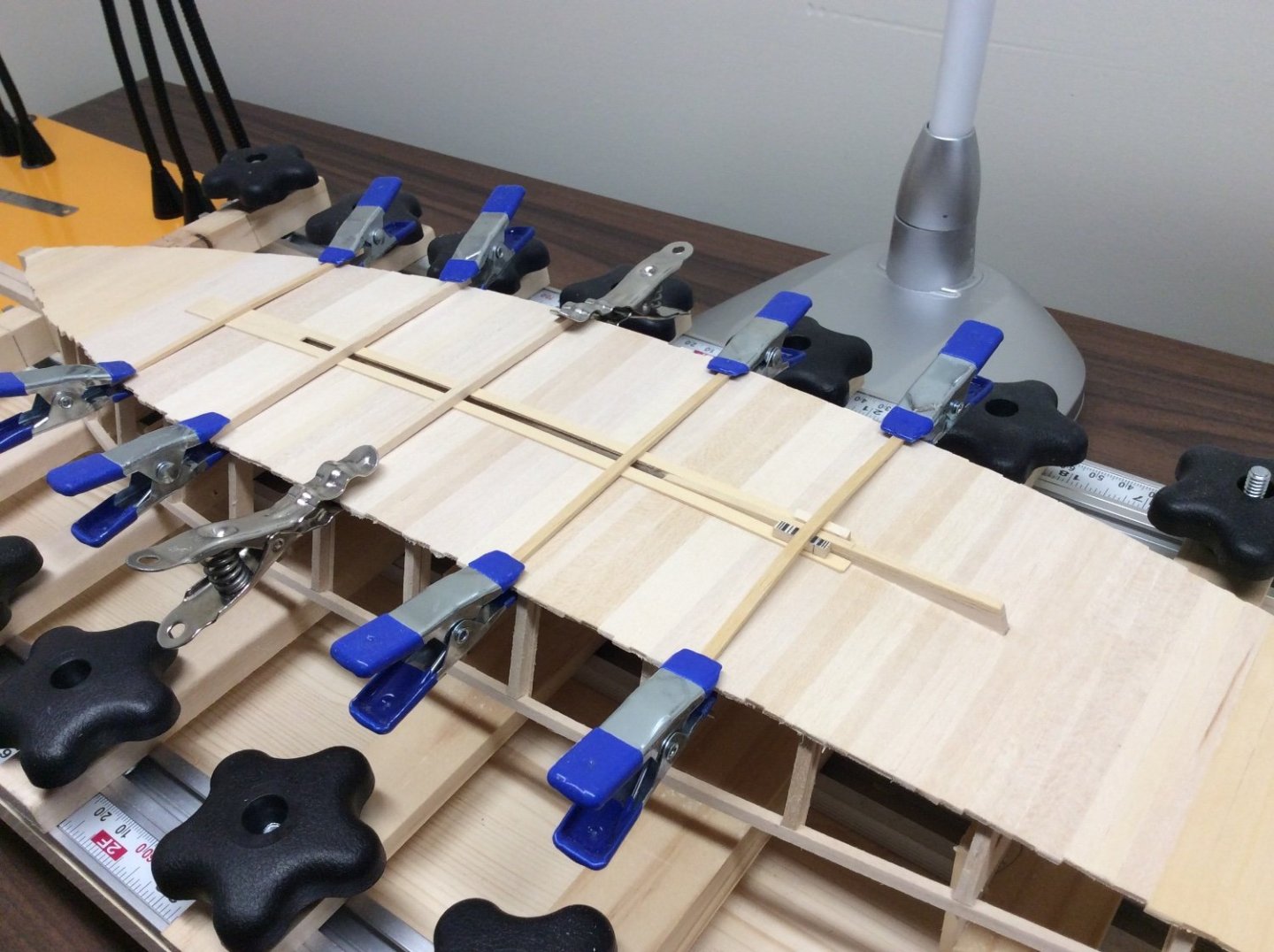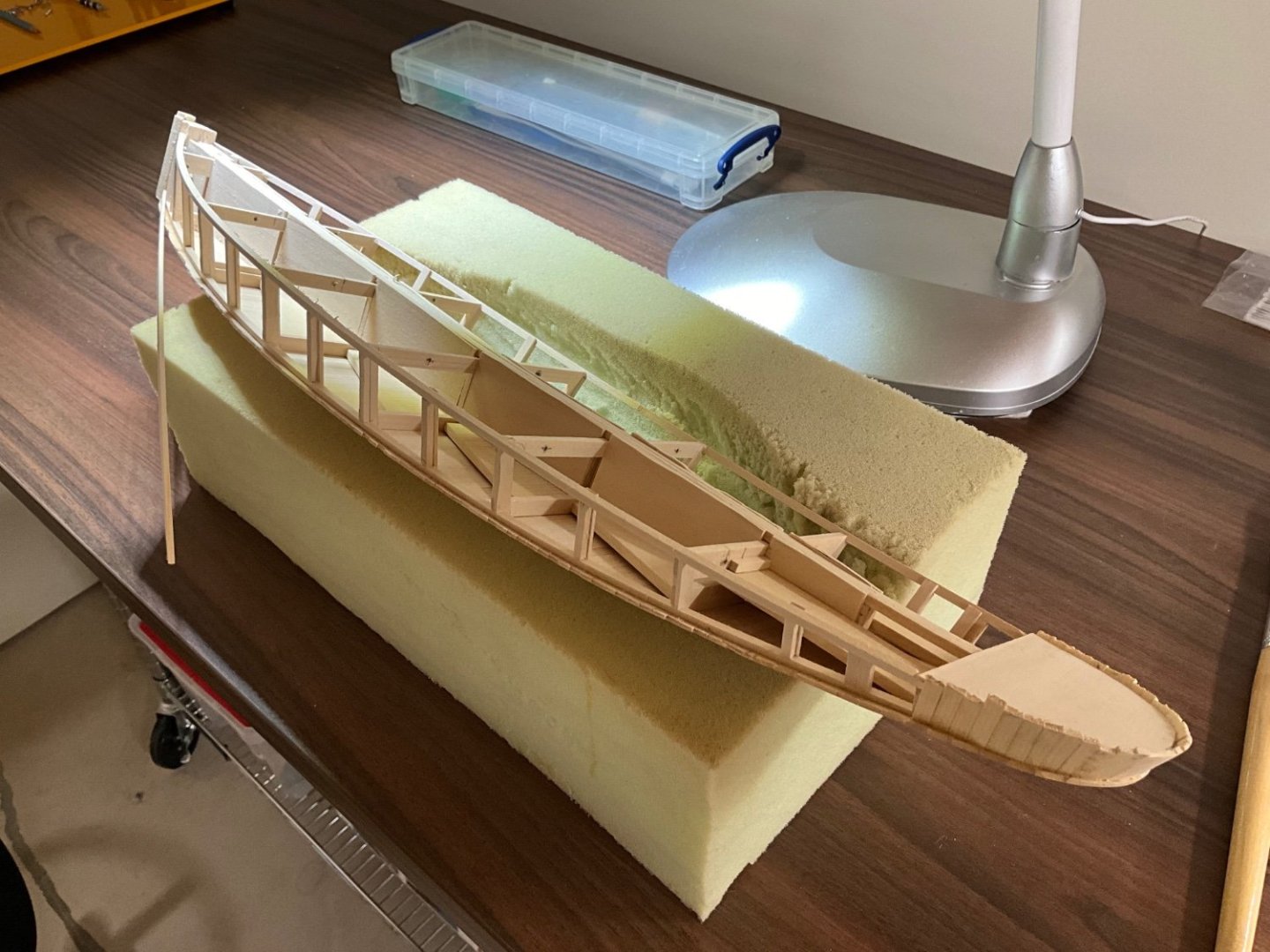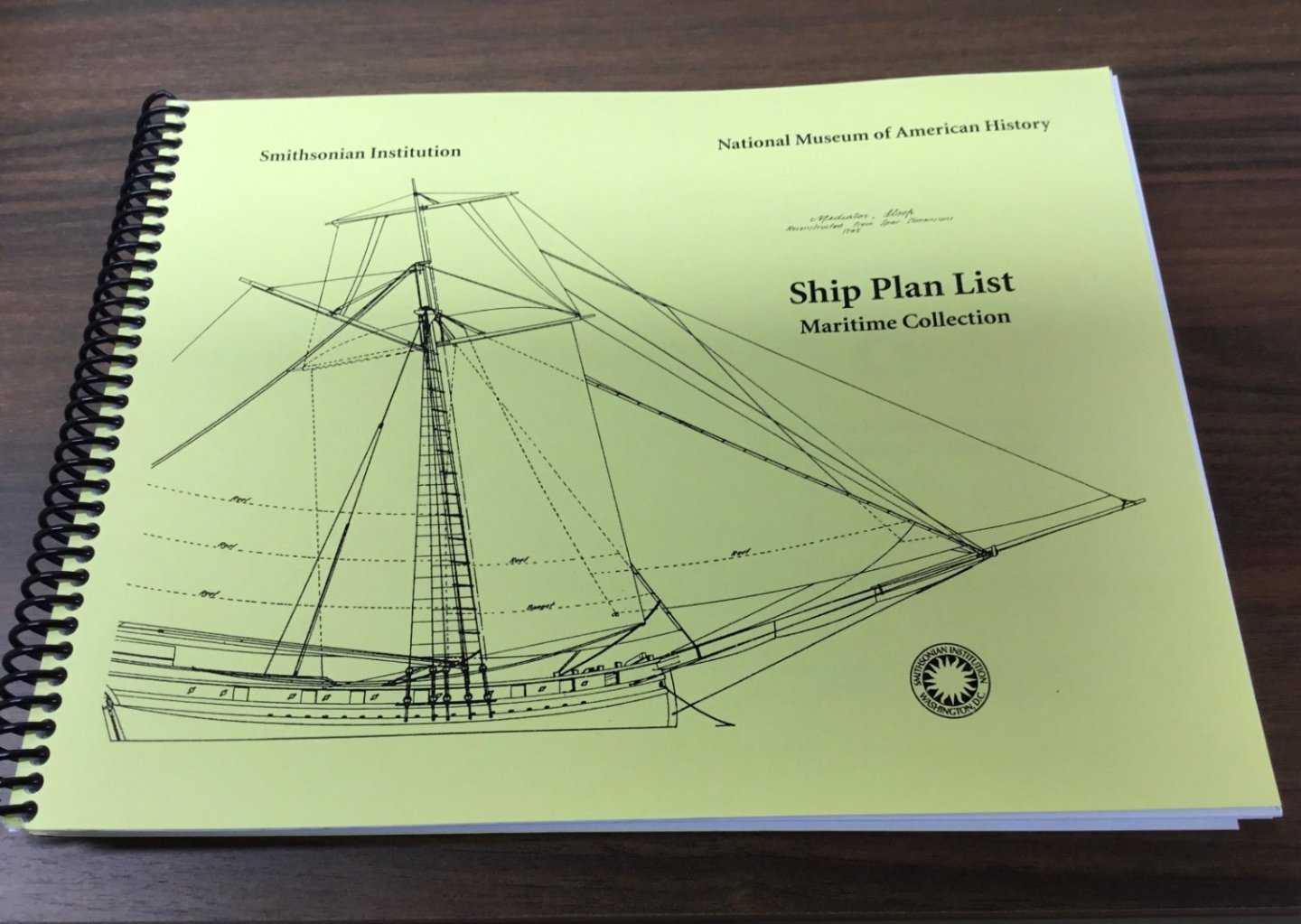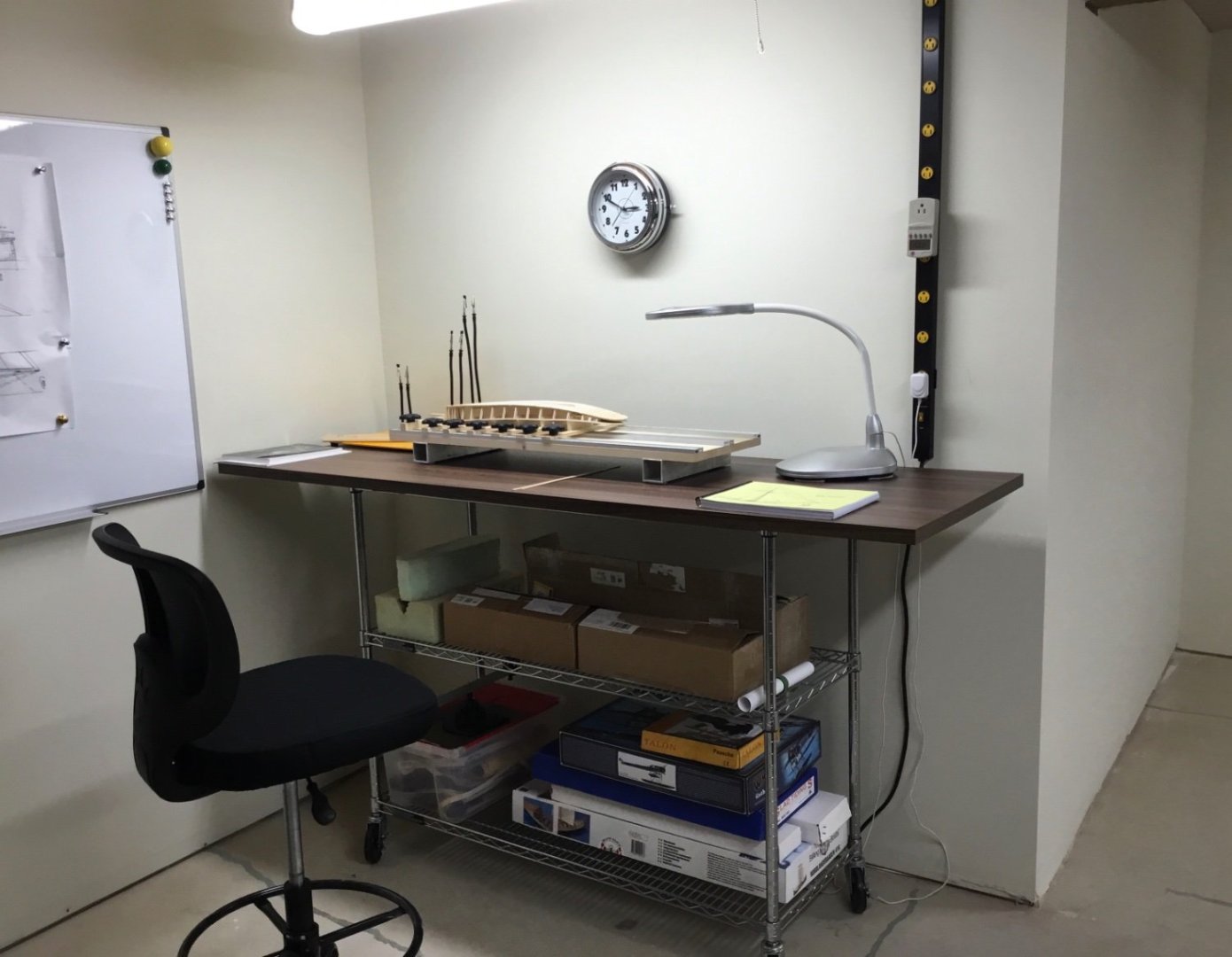
Paul Le Wol
NRG Member-
Posts
1,016 -
Joined
-
Last visited
Content Type
Profiles
Forums
Gallery
Events
Everything posted by Paul Le Wol
-
Thank you Jacques. When I started planking the bottom I started in the middle and worked in both directions using the basswood that came with the Glad Tidings kit. When I ran out of 3/16” x 1/16” basswood I changed to the 3/16” x 1/16” leftover Alaskan Yellow Cedar that I had bought to plank the Glad Tidings. So the bottom has a few inches of AYC at the bow and the stern. The sides of the hull are AYC. Started with 3/16” x 1/16” until it ran out. The rest of the hull will be finished with 1/4” AYC. She will be painted white so it should be okay. That was kind of long-winded wasn’t it 😀
- 201 replies
-
- Oyster Sharpie
- first scratch build
-
(and 1 more)
Tagged with:
-
Hi Gary, thank you for your nice comment and for checking in on the sharpie. I’ve been slowly planking her. Been using two planks in each strake so usually I glue the end of the plank at either the stem or the stern and then the next day finish gluing the rest of the plank. So it’s been taking four days to complete a strake. A couple of months ago I picked up an Ultimation disk sander and started using it to taper the planks. I like using it a lot. And it’s so quiet! That’s it for the planking for now. Going to do some sanding and then work on giving the deck beams some camber before laying down the sub deck.
- 201 replies
-
- Oyster Sharpie
- first scratch build
-
(and 1 more)
Tagged with:
-
Hi Micha, I am glad that you have accepted the Billing challenge. It will turn out great!
- 146 replies
-
- Roar Ege
- Billing Boats
-
(and 2 more)
Tagged with:
-
Congratulations on completing your Yakatabune. Fine looking boat and great pics!
- 7 replies
-
- Japanese boat
- yakatabune
-
(and 2 more)
Tagged with:
-
P-51D Mustang by CDW - FINISHED - Dragon - 1:32 Scale
Paul Le Wol replied to CDW's topic in Non-ship/categorised builds
Craig, congratulations on finishing your Mustang!. Thanks to you and everyone for sharing so much great information. -
Challenger86, congratulations on completing this beautiful Duyfken.
- 16 replies
-
- Duyfken
- Modellers Shipyard
-
(and 1 more)
Tagged with:
-
Thanks Dave, when I put the build on hold last year I was afraid I would lose momentum. Well I sure did 😀
- 201 replies
-
- Oyster Sharpie
- first scratch build
-
(and 1 more)
Tagged with:
-
Hi Everyone, I got sidetracked when I moved last summer but I’ve managed to find some time between the renovations to work on the sharpie. The bottom of the hull was finished being planked and the stem was attached just before I moved. A couple of weeks ago the 1/8” x 1/8” strip of wood that blocked the center board slot was removed with an 1/8” chisel. A 1/16” strip of wood was added to the skeg to make it stand a little more proud. Then the shoe was made using 5/32” x 1/32” AYC. and attached. It should have been a bit narrower but it won’t be noticeable once it’s finished. The staves were glued to the round stern with PVA so that took a week to complete. From what I’ve read the planking on the sides of the hull weren’t tapered but that might have been on the smaller sharpies. It seemed to be easier to taper them so that’s what I did. The planks were glued at the stem using Medium CA and then PVA for the rest of the plank. Now on to the starboard side with three strakes. Hope to see you soon.
- 201 replies
-
- Oyster Sharpie
- first scratch build
-
(and 1 more)
Tagged with:
-
Hi Jacques, everything is looking great. If the coating on the steel wire is giving you grief you can try sanding it off and then heat the wire with a butane lighter or mini torch.. The metal will turn dark grey giving it a more natural look. Someone posted this suggestion a little while ago but regrettably I can’t remember who it was.
- 286 replies
-
I've lost it....need a refresher to get my confidence back
Paul Le Wol replied to bigcreekdad's topic in Wood ship model kits
I’ve never built one but I keep looking at the Wasen - Japanese style boats made by Woody JOE. They look like they would be an interesting and fun build. Good luck with your decision. -
Gary, congratulations on finishing your Lobster Smack. Beautiful looking boat!
- 88 replies
-
- Muscongus Bay Lobster Smack
- Finished
-
(and 1 more)
Tagged with:
-
Major, congratulations on finishing your Lobster Smack! She may have been ornery, but she is a fine looking boat.
- 40 replies
-
- Model Shipways
- Muscongus Bay Lobster Smack
-
(and 1 more)
Tagged with:
-
Jacques, congratulations on finishing your Juana y Jose. Your scratch builds have been very interesting and informative. Always enjoy seeing your updates.
-
AMC DH9 by davec - FINISHED - Wingnut Wings - 1/32
Paul Le Wol replied to davec's topic in Non-ship/categorised builds
Thanks Dave, this will be a very interesting build to follow 👍 -
AMC DH9 by davec - FINISHED - Wingnut Wings - 1/32
Paul Le Wol replied to davec's topic in Non-ship/categorised builds
Hi Dave, glad to see that you are starting this log here. What do you think of the GasPatch accessories. Are they a lot nicer than the kit parts? -
Hi Joe, the Sharpie you’ve acquired is truly beautiful and inspirational. I didn’t realize that it had been that long since your last post. Time certainly flies. Hope you are able to finish and display her soon.
- 201 replies
-
- Oyster Sharpie
- first scratch build
-
(and 1 more)
Tagged with:
-
Hi Dave, and thank you. Your Sharpie is one of the best examples out there!
- 201 replies
-
- Oyster Sharpie
- first scratch build
-
(and 1 more)
Tagged with:
-
Hi Joe, thanks for asking. I was looking at her last night and thinking it was time to get back to it. Last summer I moved to this new ( for me ) place. It took way longer than I thought it would to renovate but I now have a work room. Then this came in the mail today. Hope it’s not too much of a distraction 😀 I want to start on the staves running around the stern in the next couple of weeks.
- 201 replies
-
- Oyster Sharpie
- first scratch build
-
(and 1 more)
Tagged with:
About us
Modelshipworld - Advancing Ship Modeling through Research
SSL Secured
Your security is important for us so this Website is SSL-Secured
NRG Mailing Address
Nautical Research Guild
237 South Lincoln Street
Westmont IL, 60559-1917
Model Ship World ® and the MSW logo are Registered Trademarks, and belong to the Nautical Research Guild (United States Patent and Trademark Office: No. 6,929,264 & No. 6,929,274, registered Dec. 20, 2022)
Helpful Links
About the NRG
If you enjoy building ship models that are historically accurate as well as beautiful, then The Nautical Research Guild (NRG) is just right for you.
The Guild is a non-profit educational organization whose mission is to “Advance Ship Modeling Through Research”. We provide support to our members in their efforts to raise the quality of their model ships.
The Nautical Research Guild has published our world-renowned quarterly magazine, The Nautical Research Journal, since 1955. The pages of the Journal are full of articles by accomplished ship modelers who show you how they create those exquisite details on their models, and by maritime historians who show you the correct details to build. The Journal is available in both print and digital editions. Go to the NRG web site (www.thenrg.org) to download a complimentary digital copy of the Journal. The NRG also publishes plan sets, books and compilations of back issues of the Journal and the former Ships in Scale and Model Ship Builder magazines.


